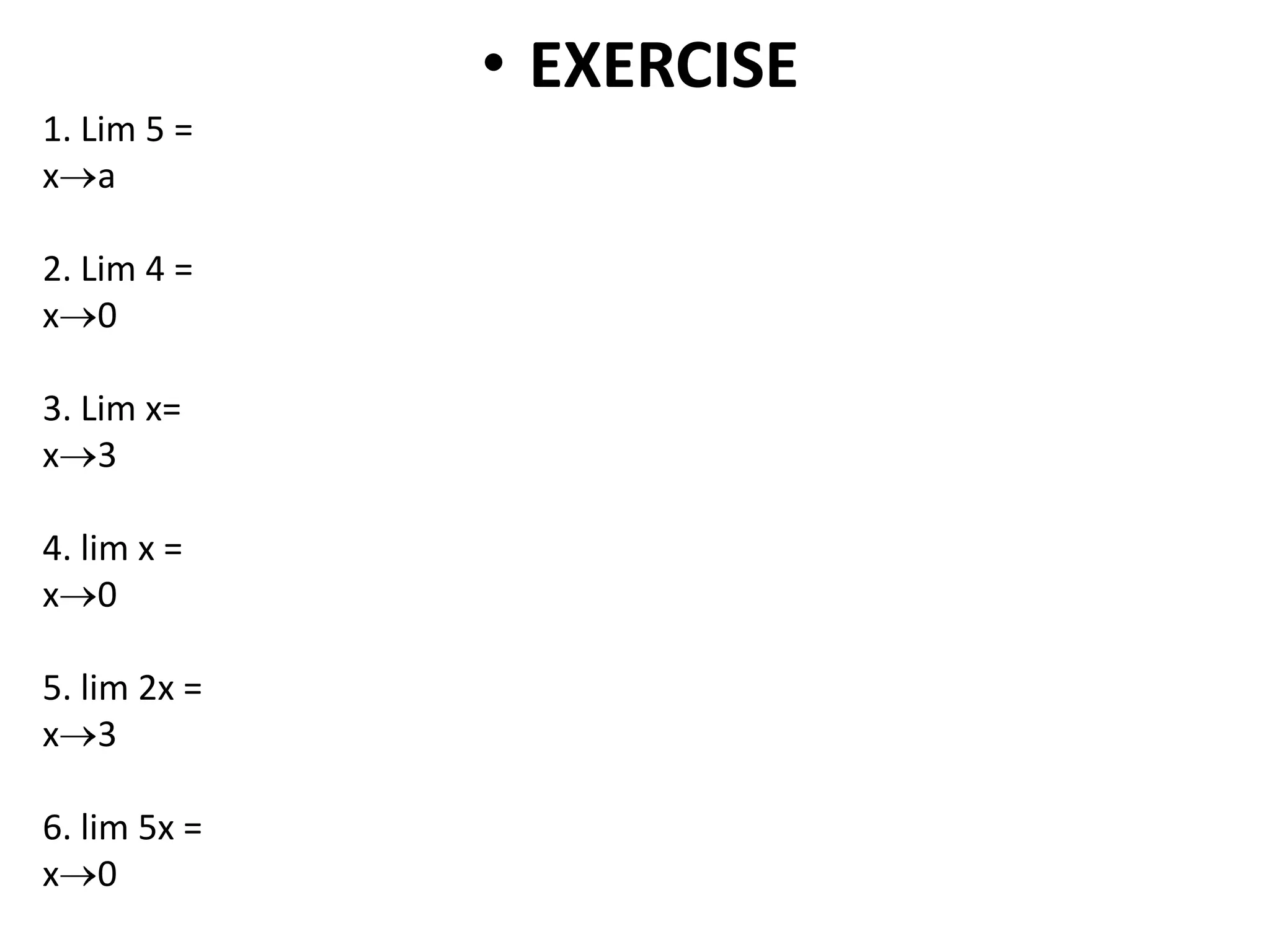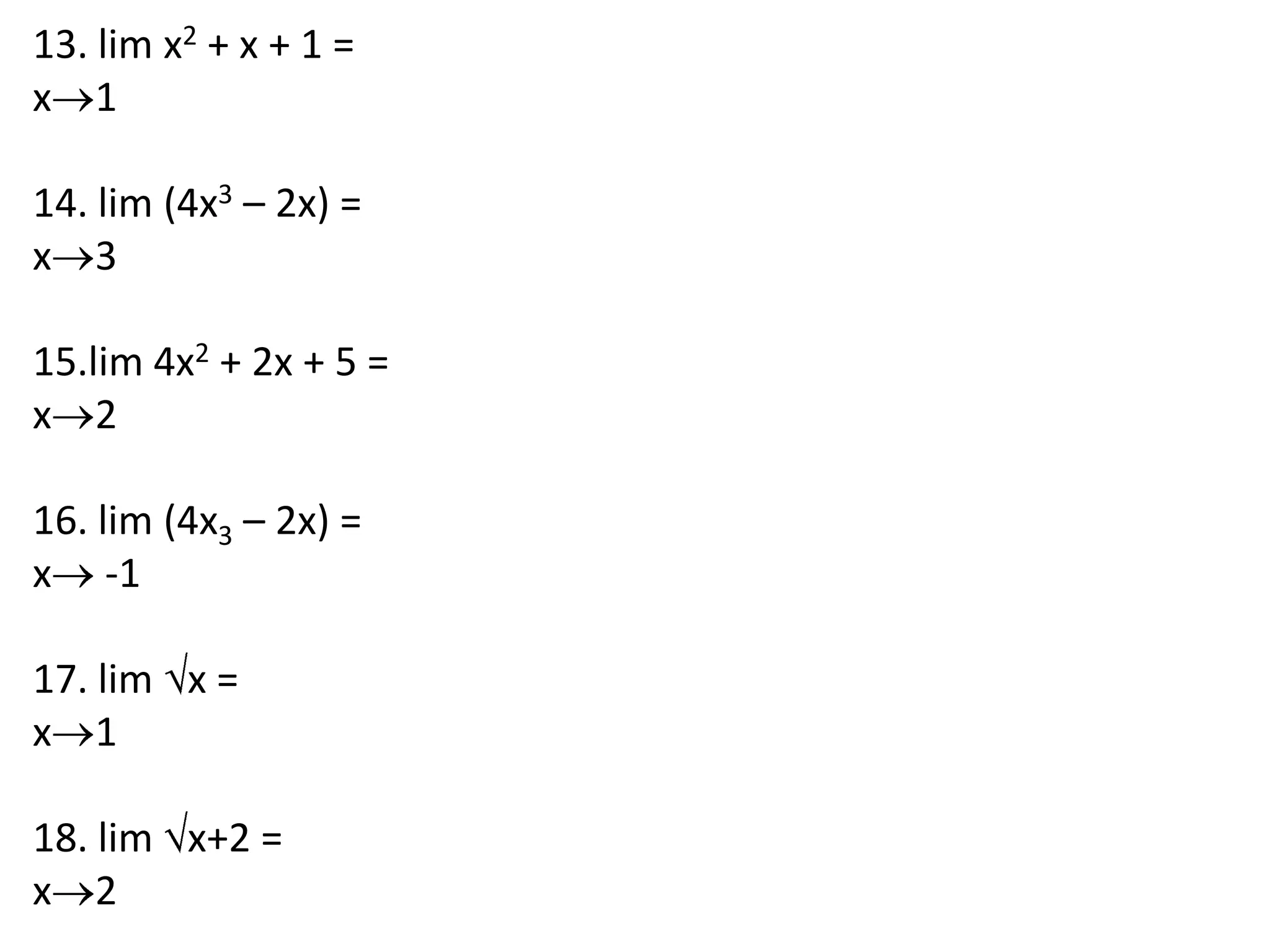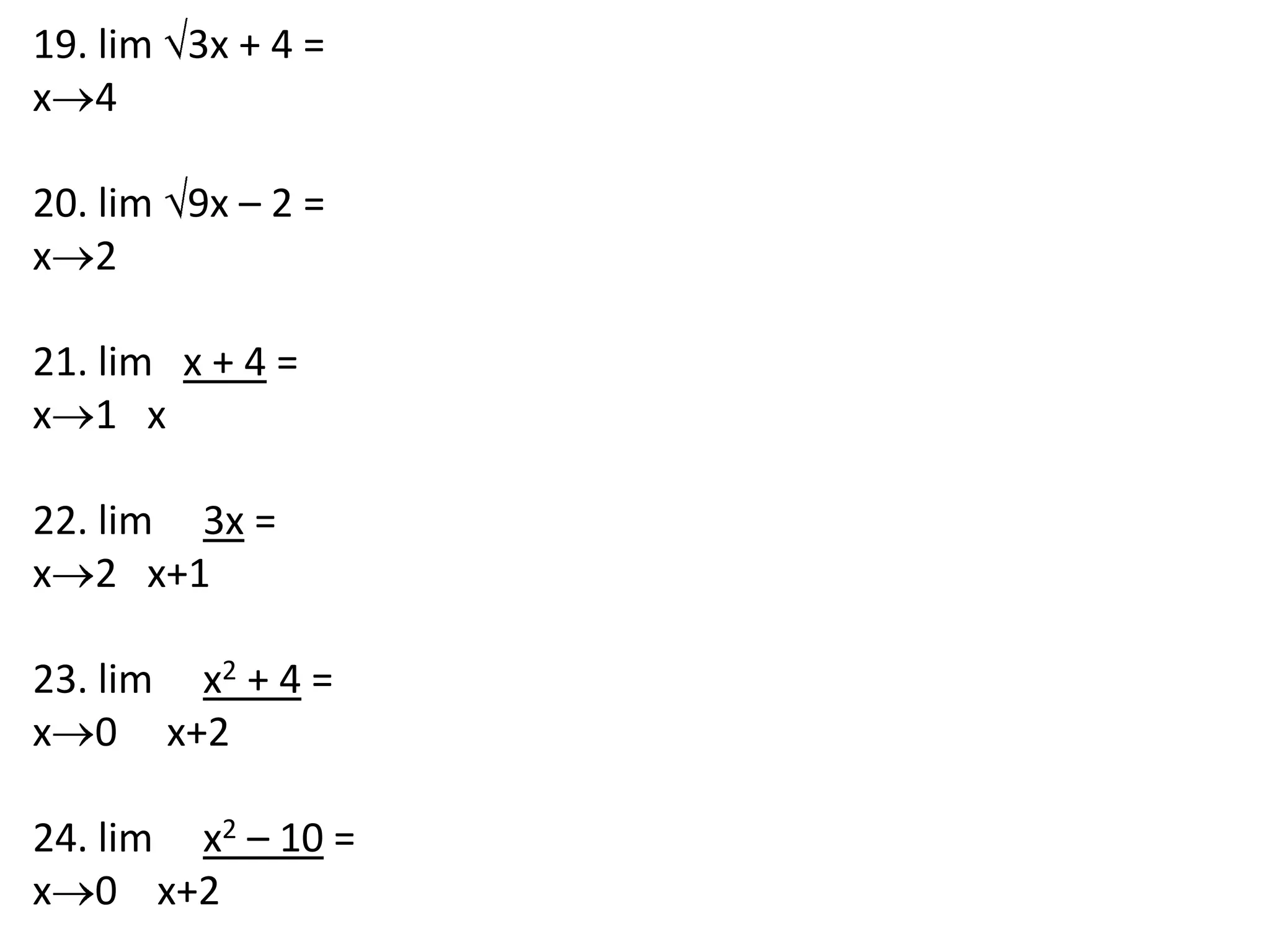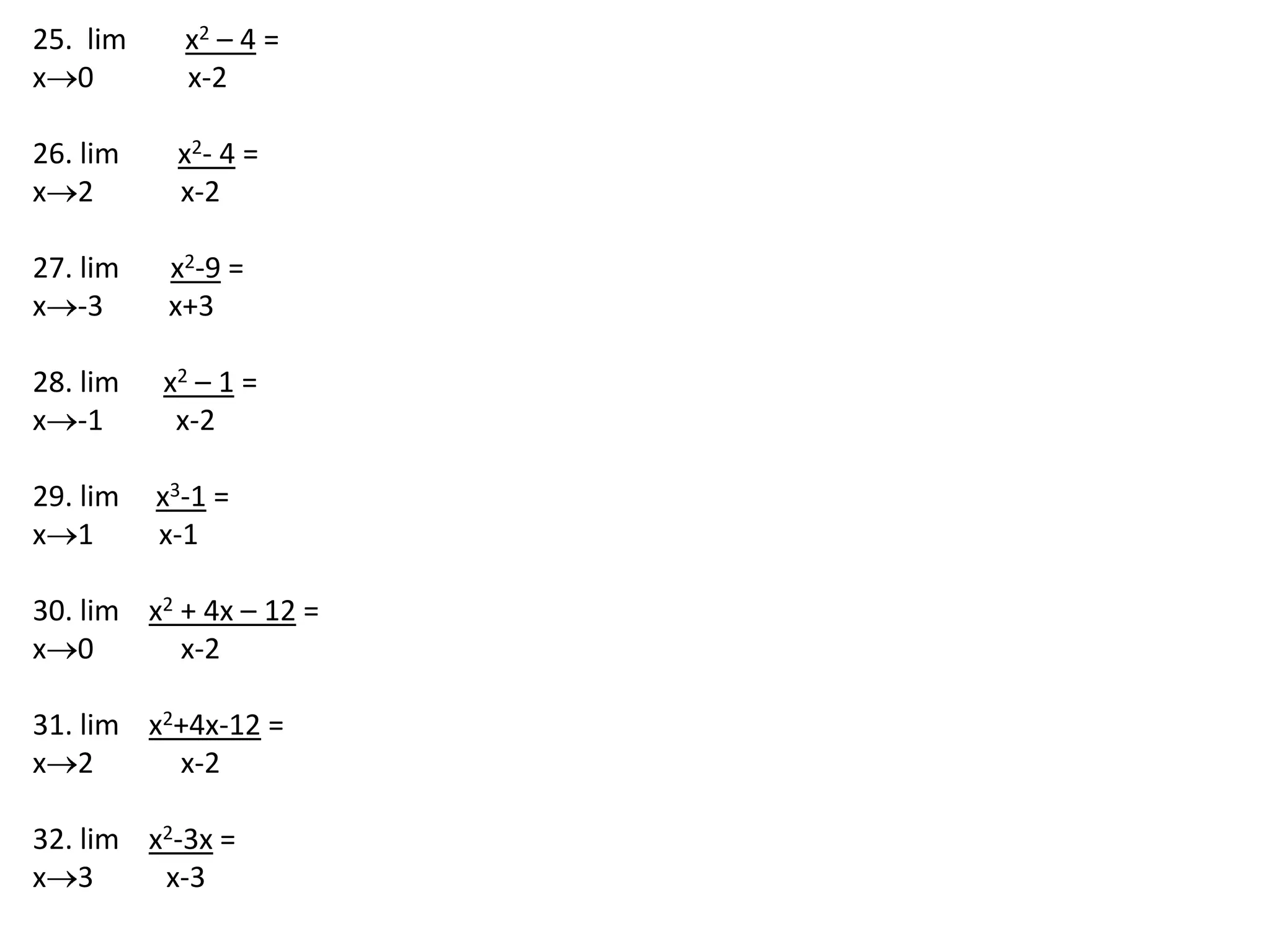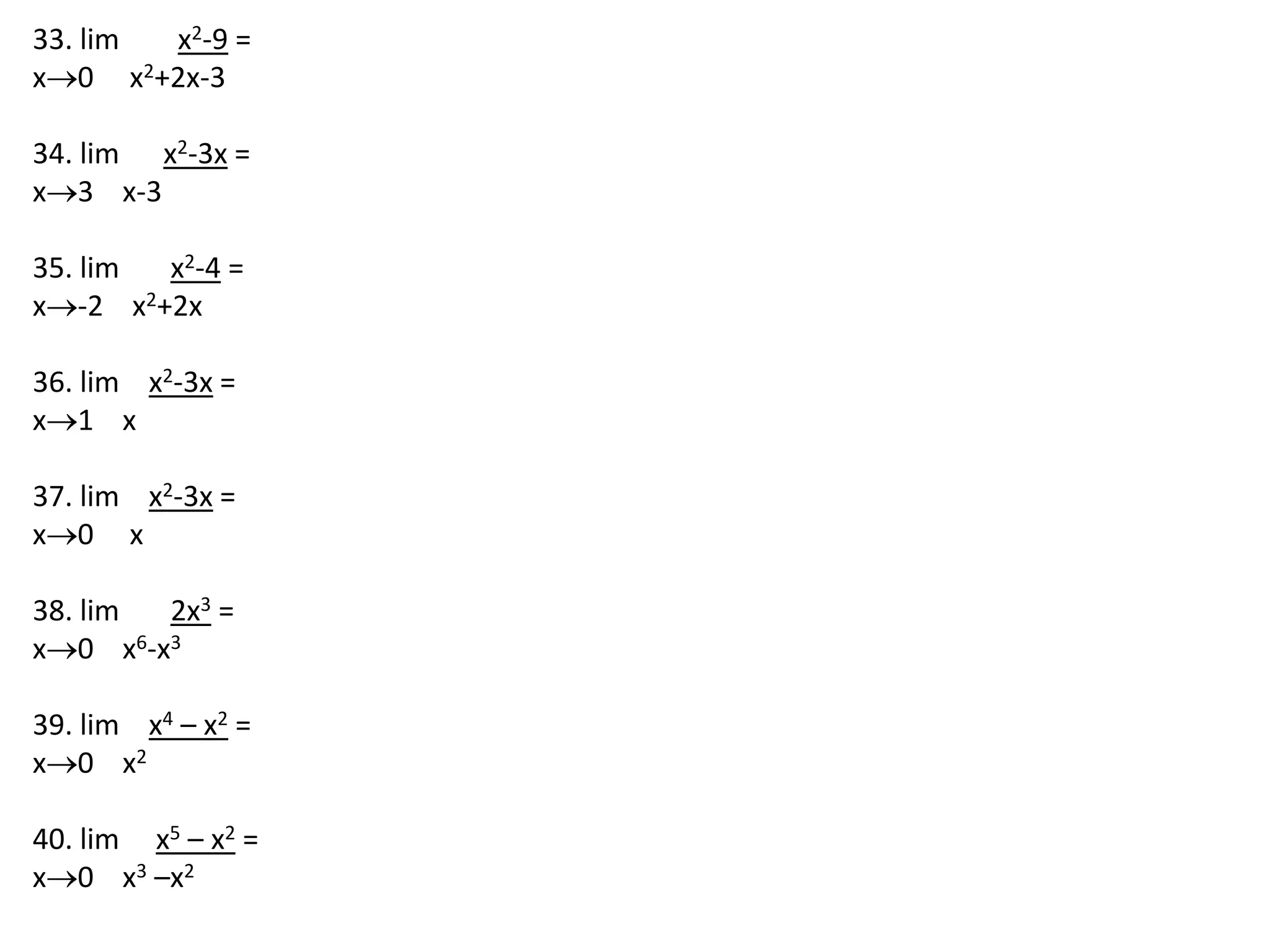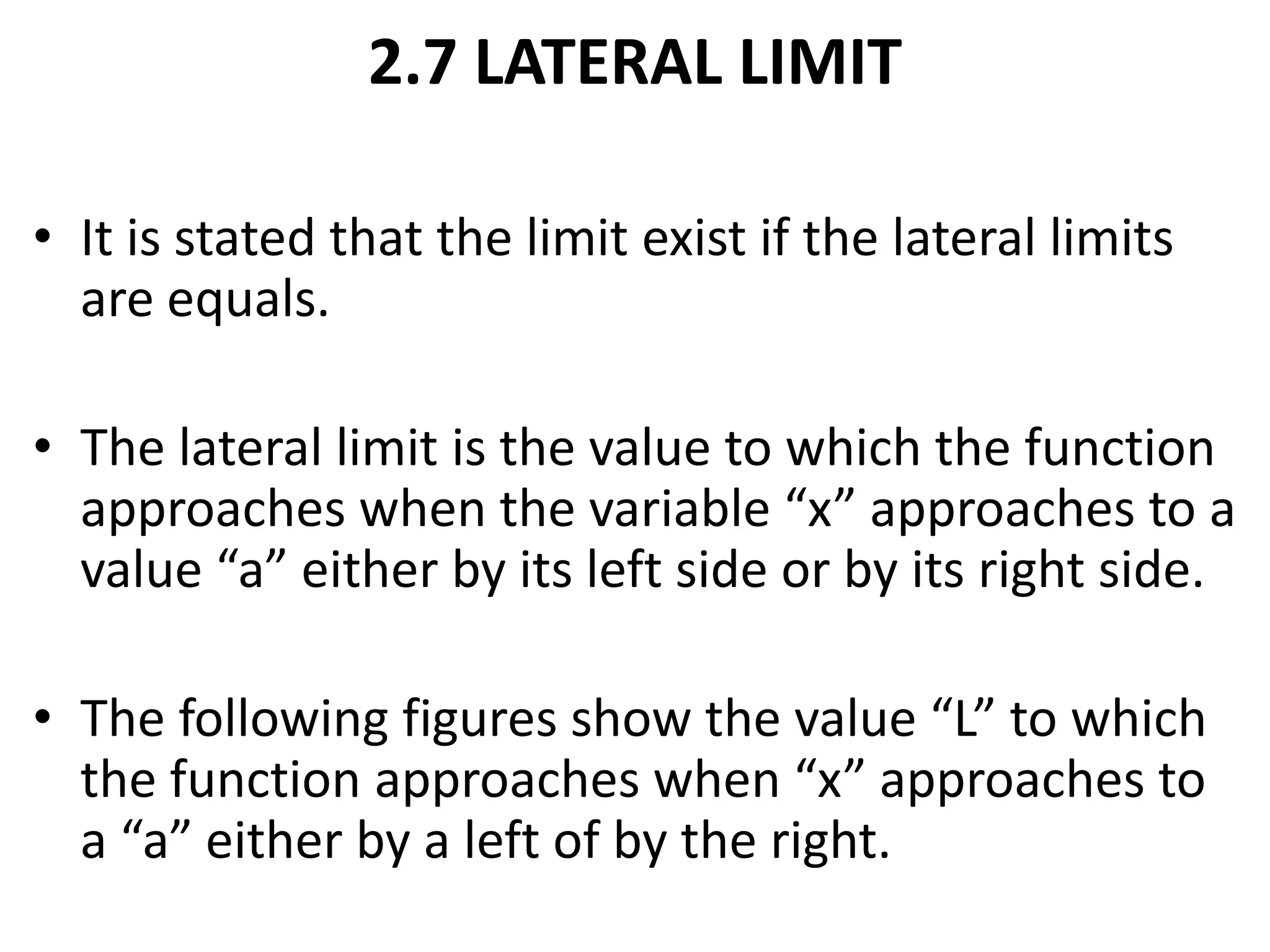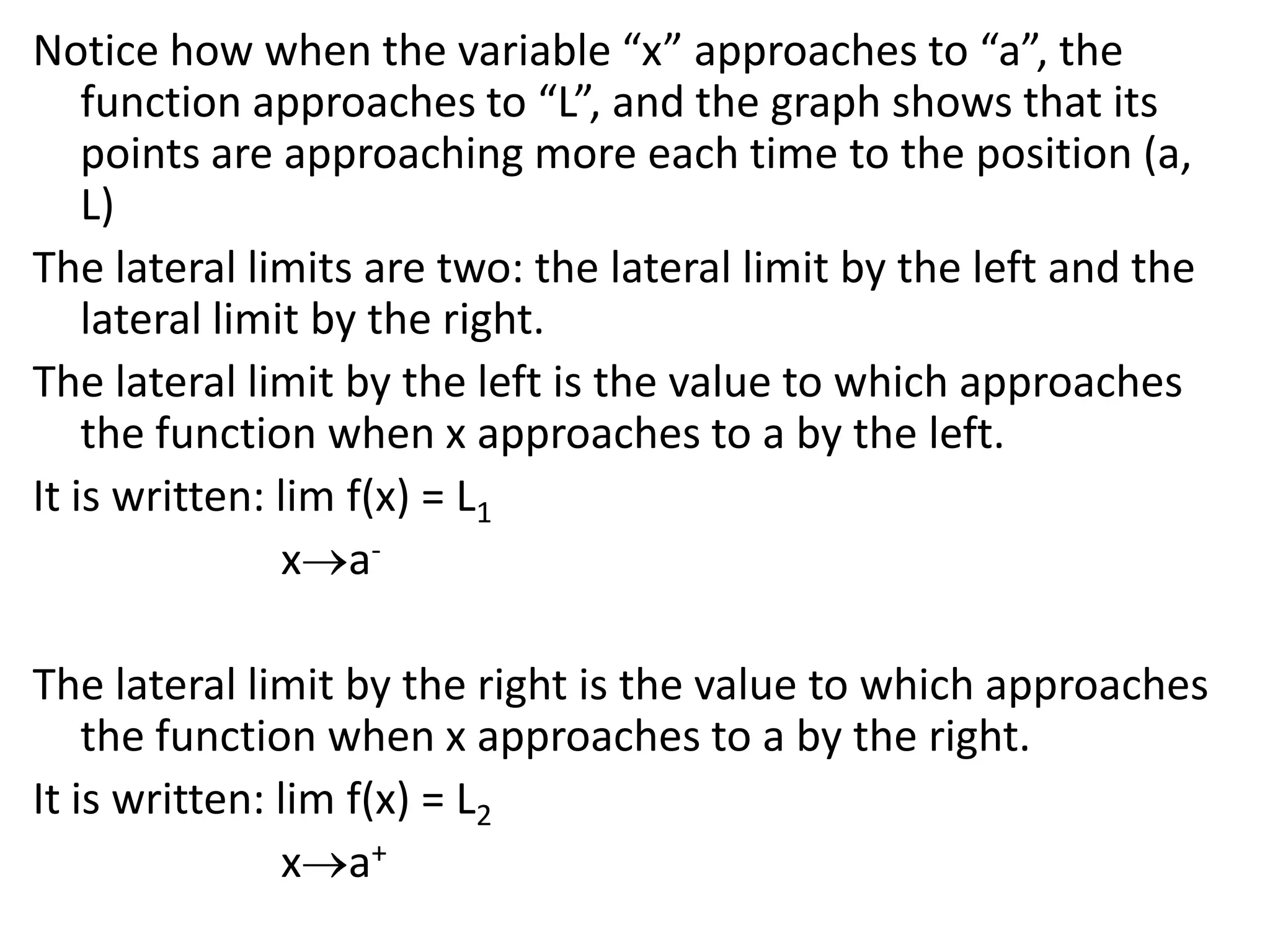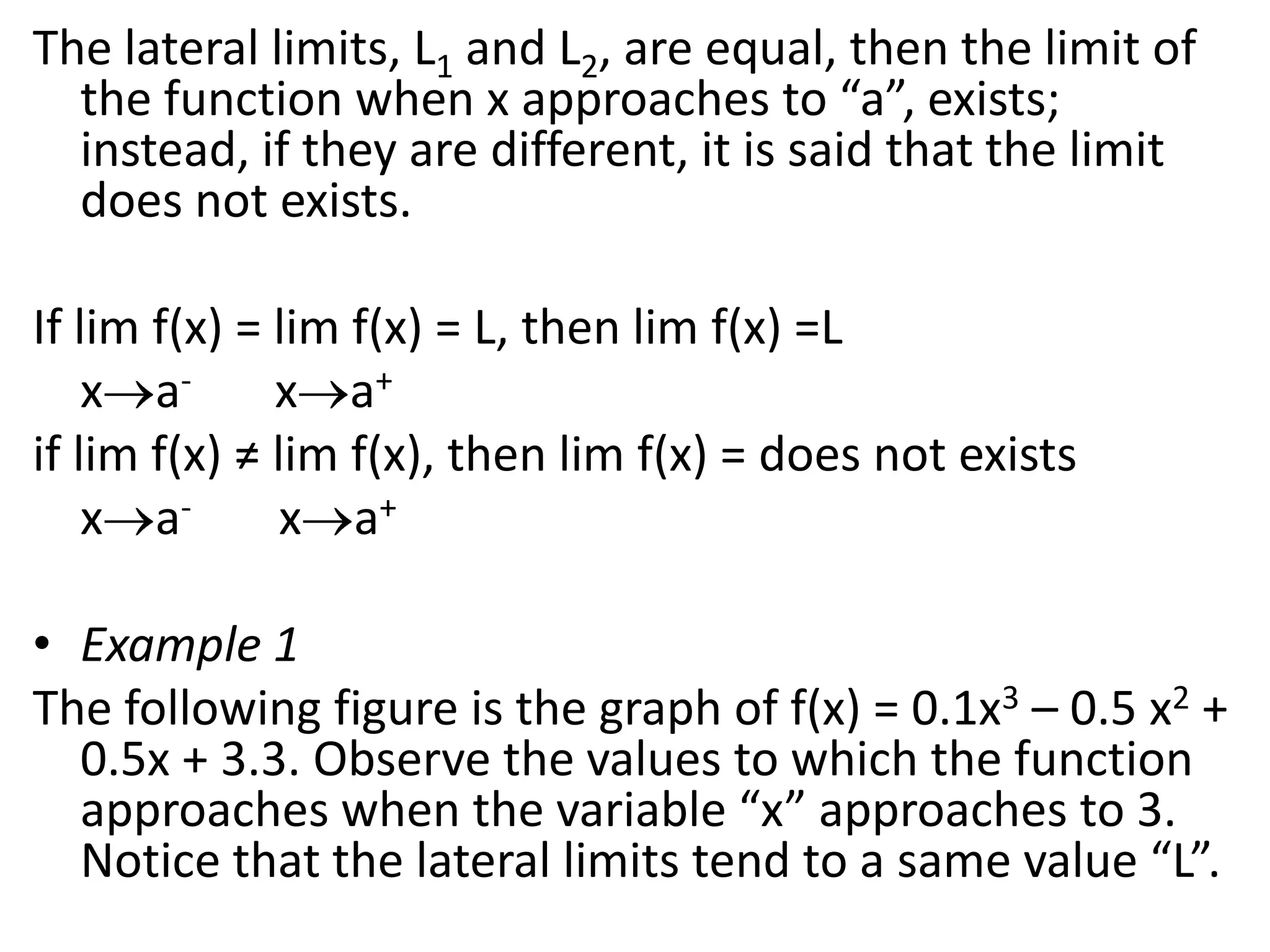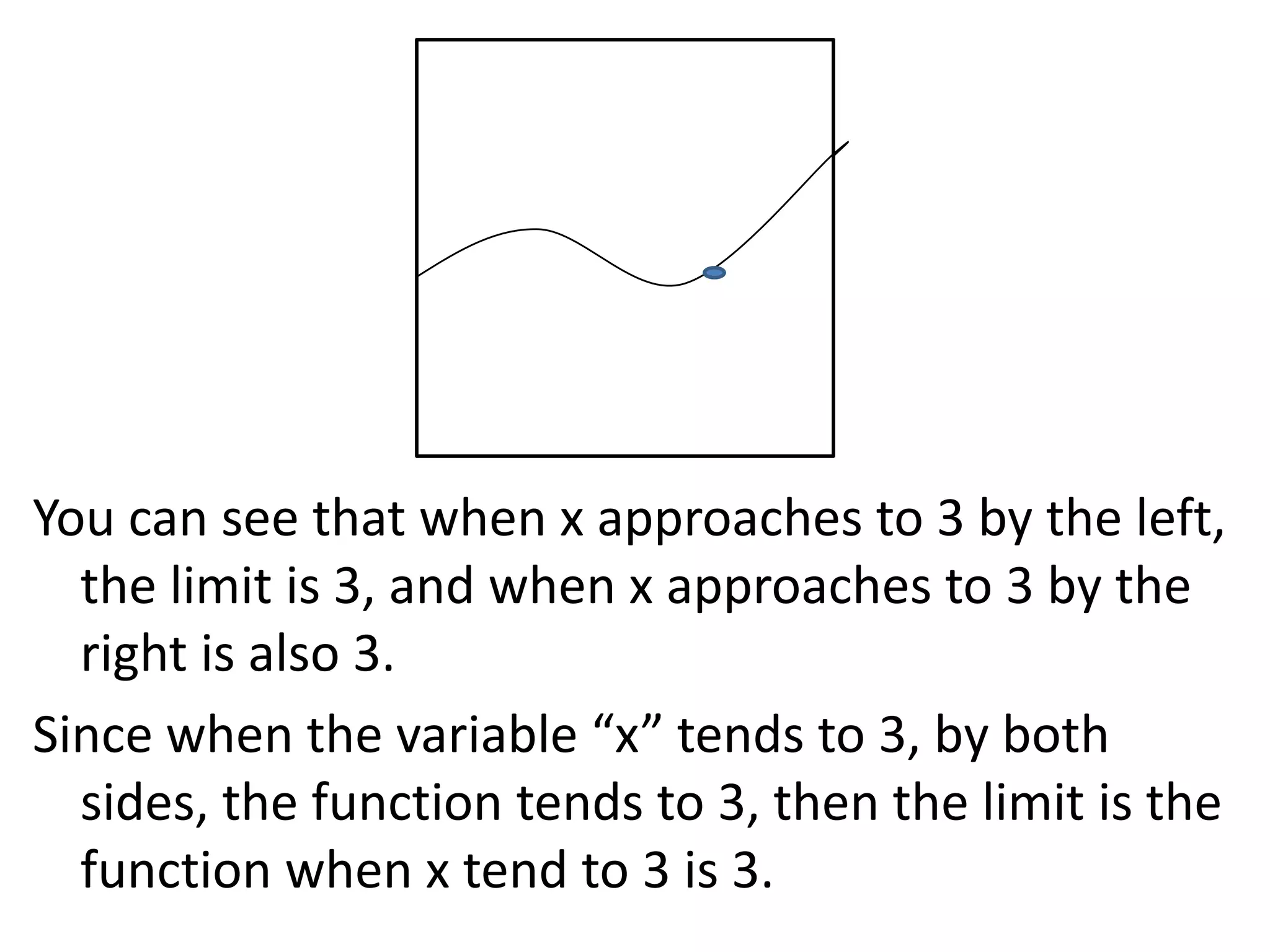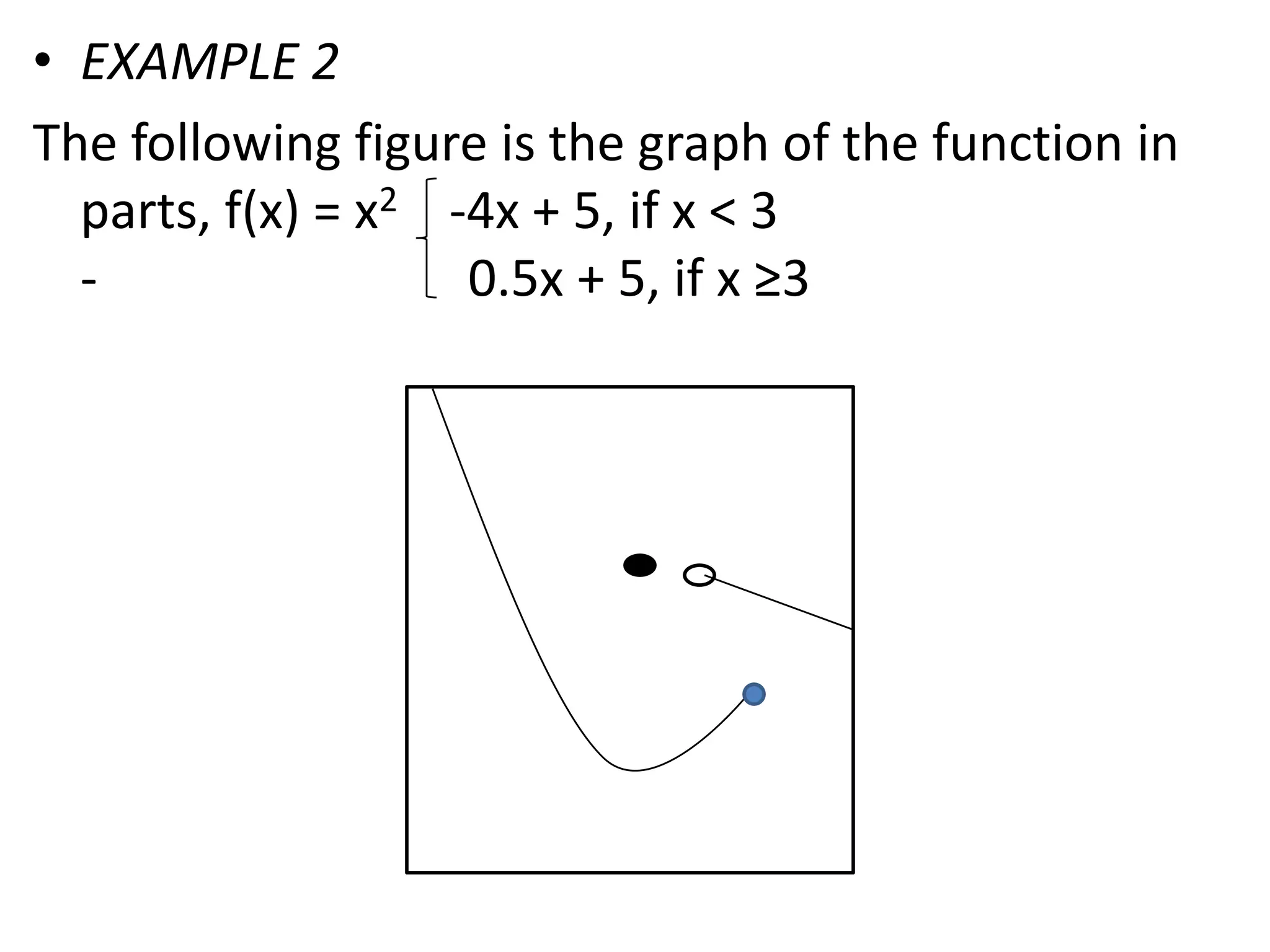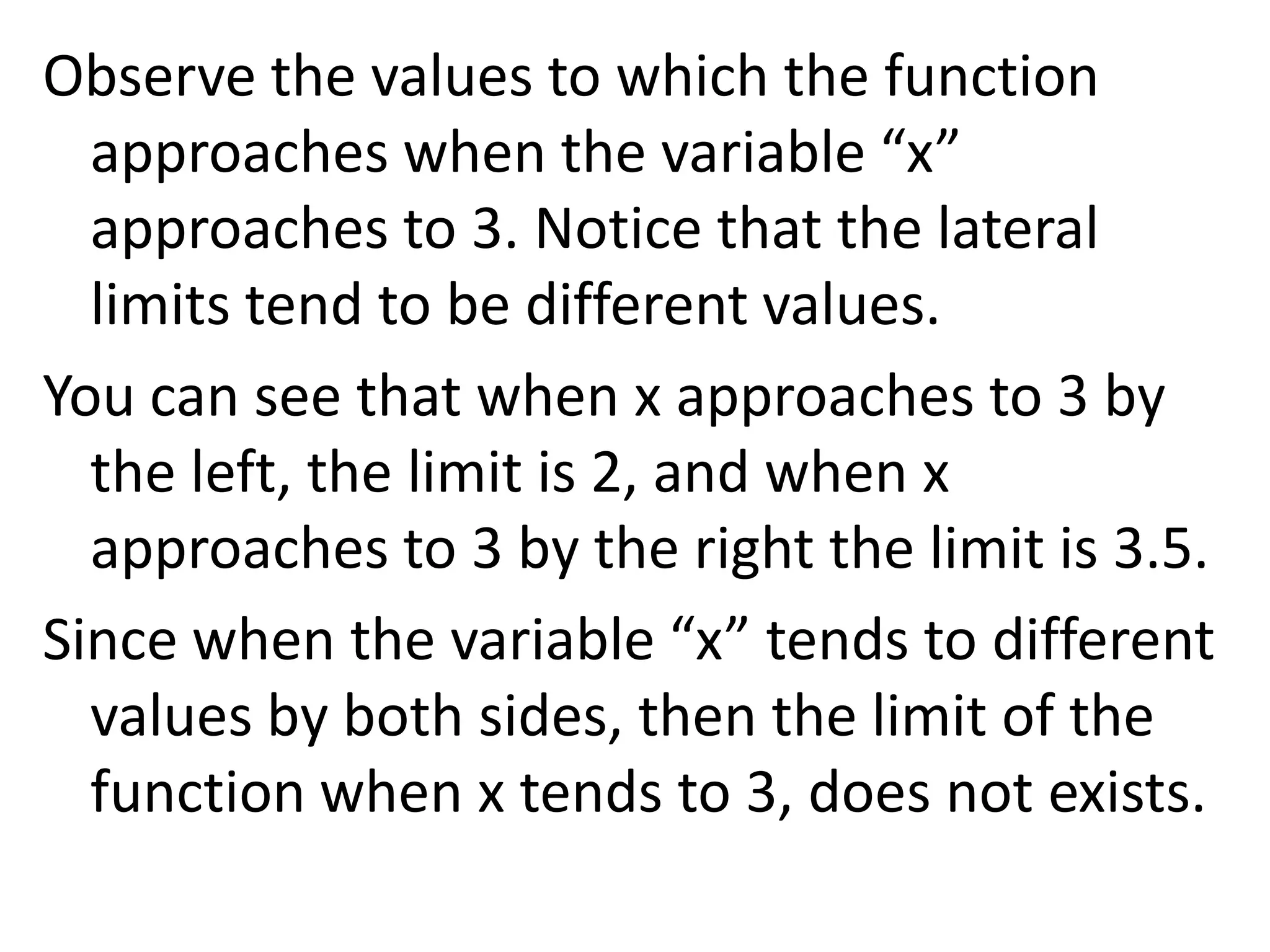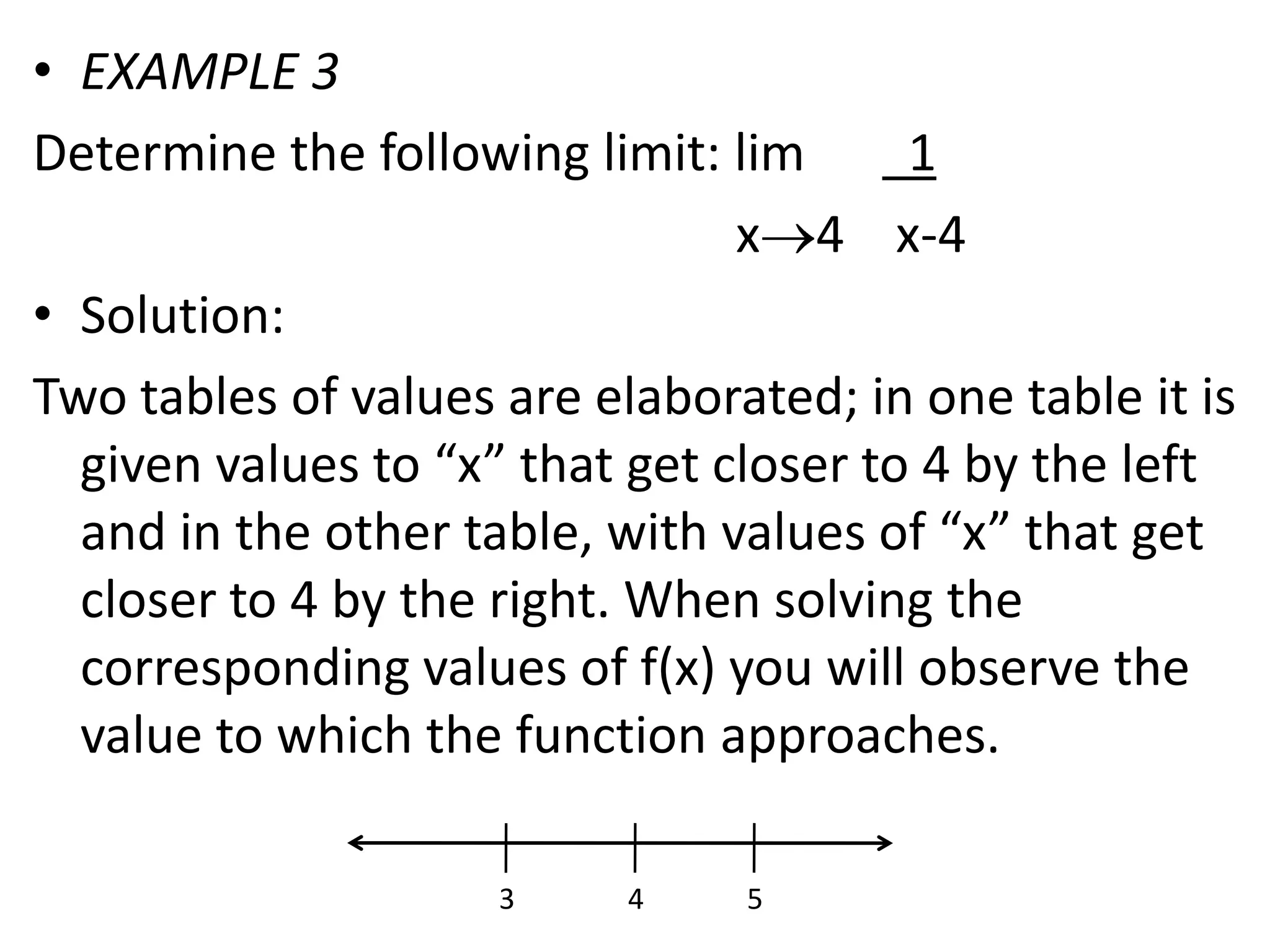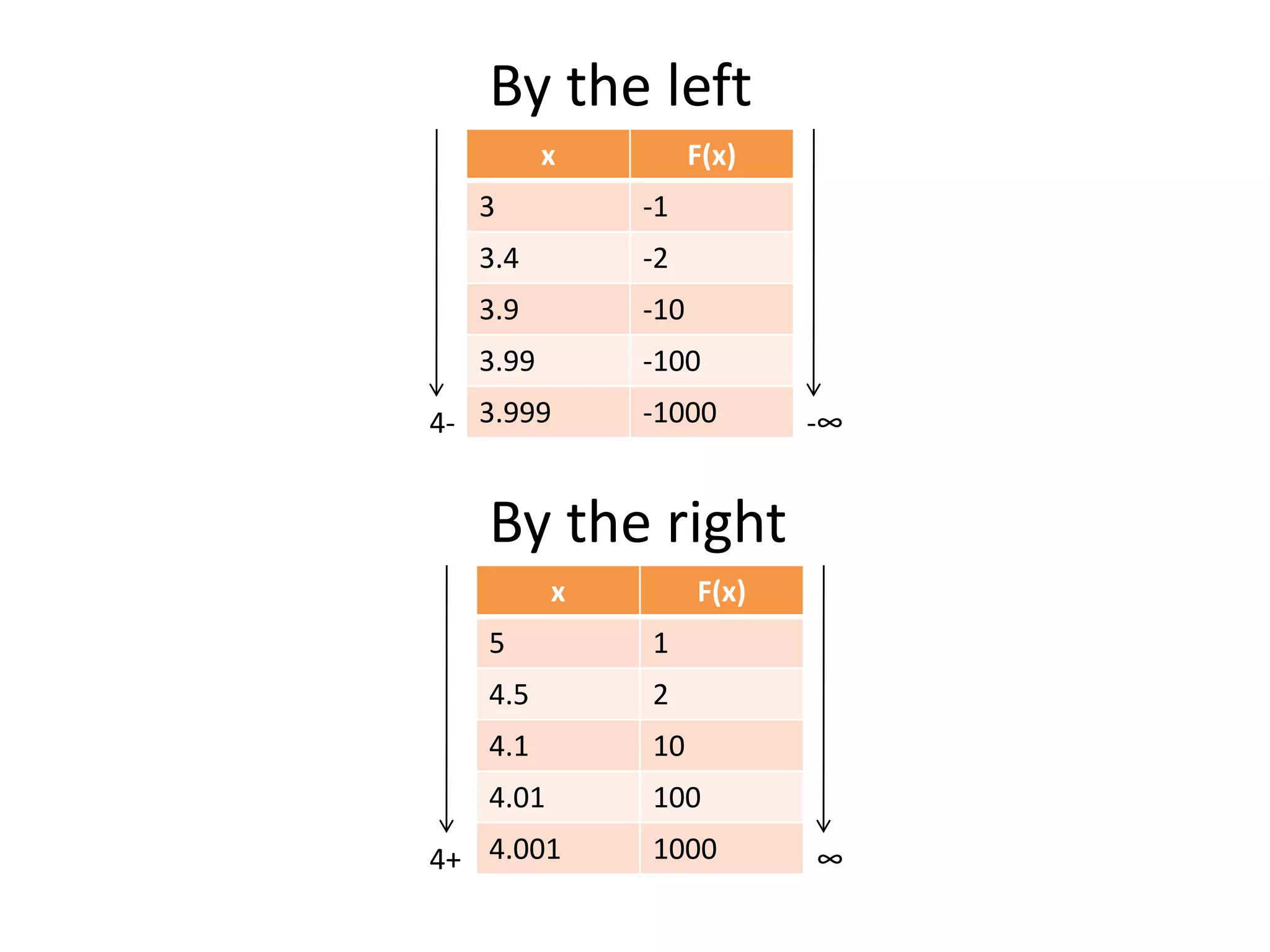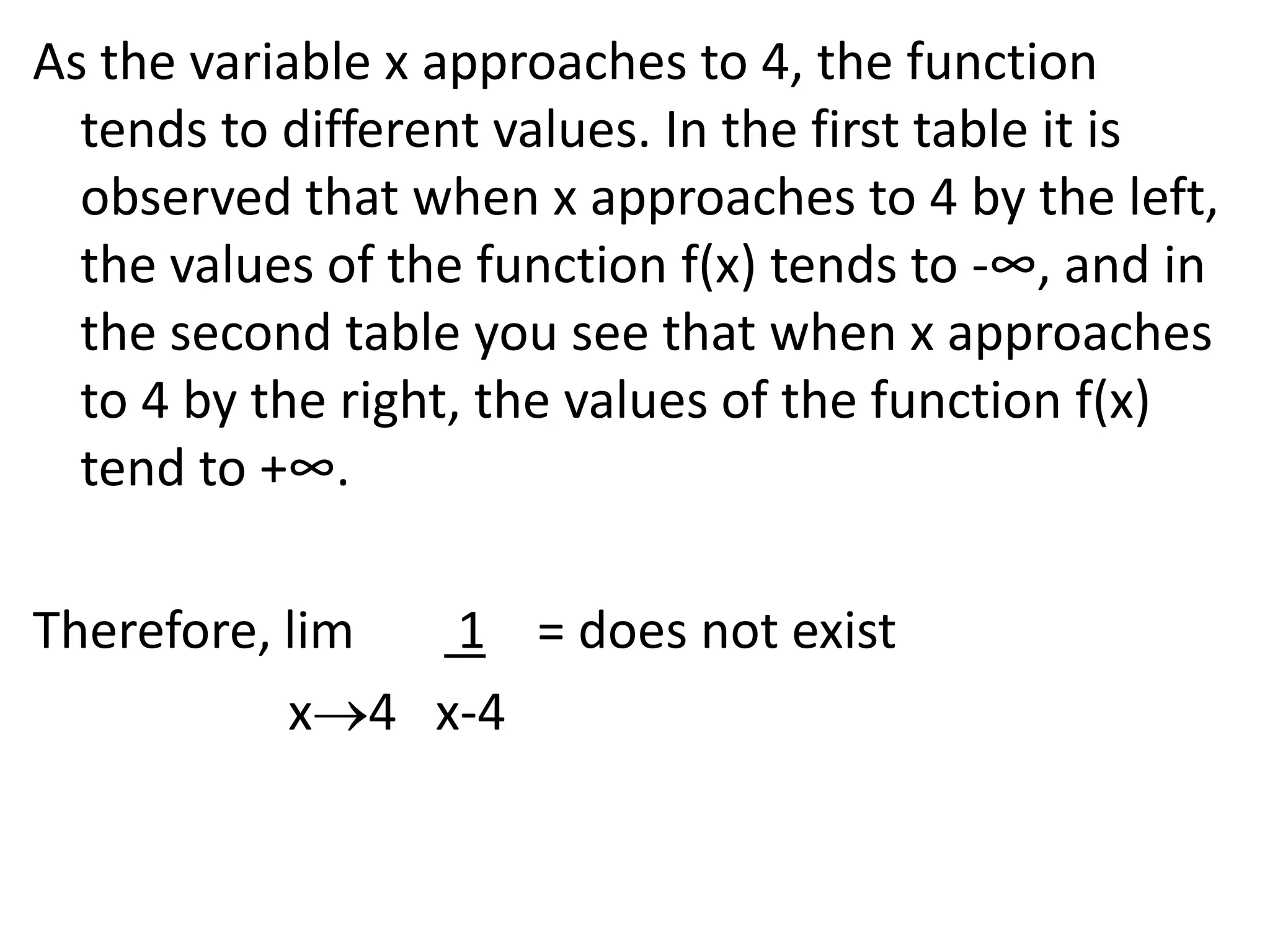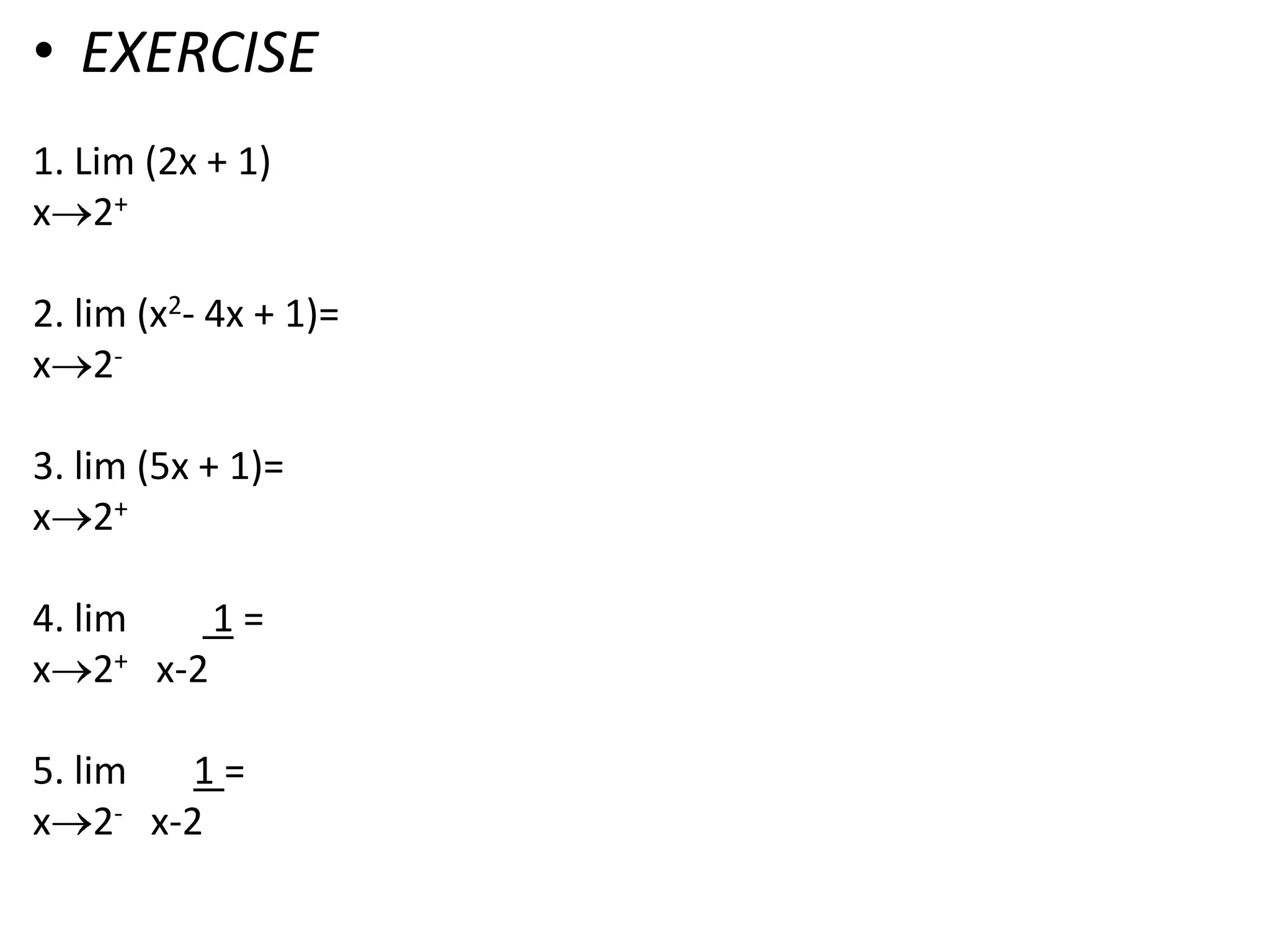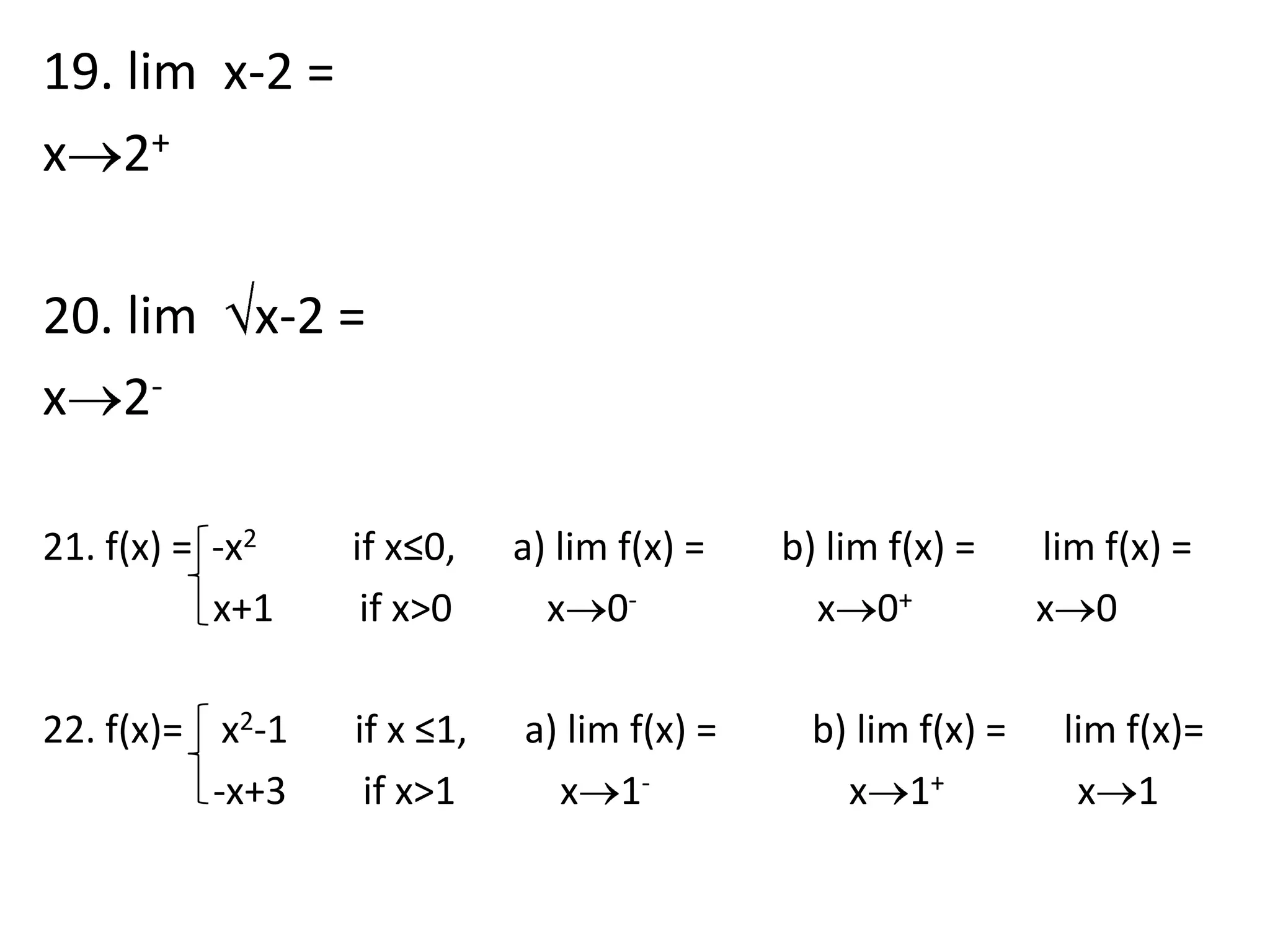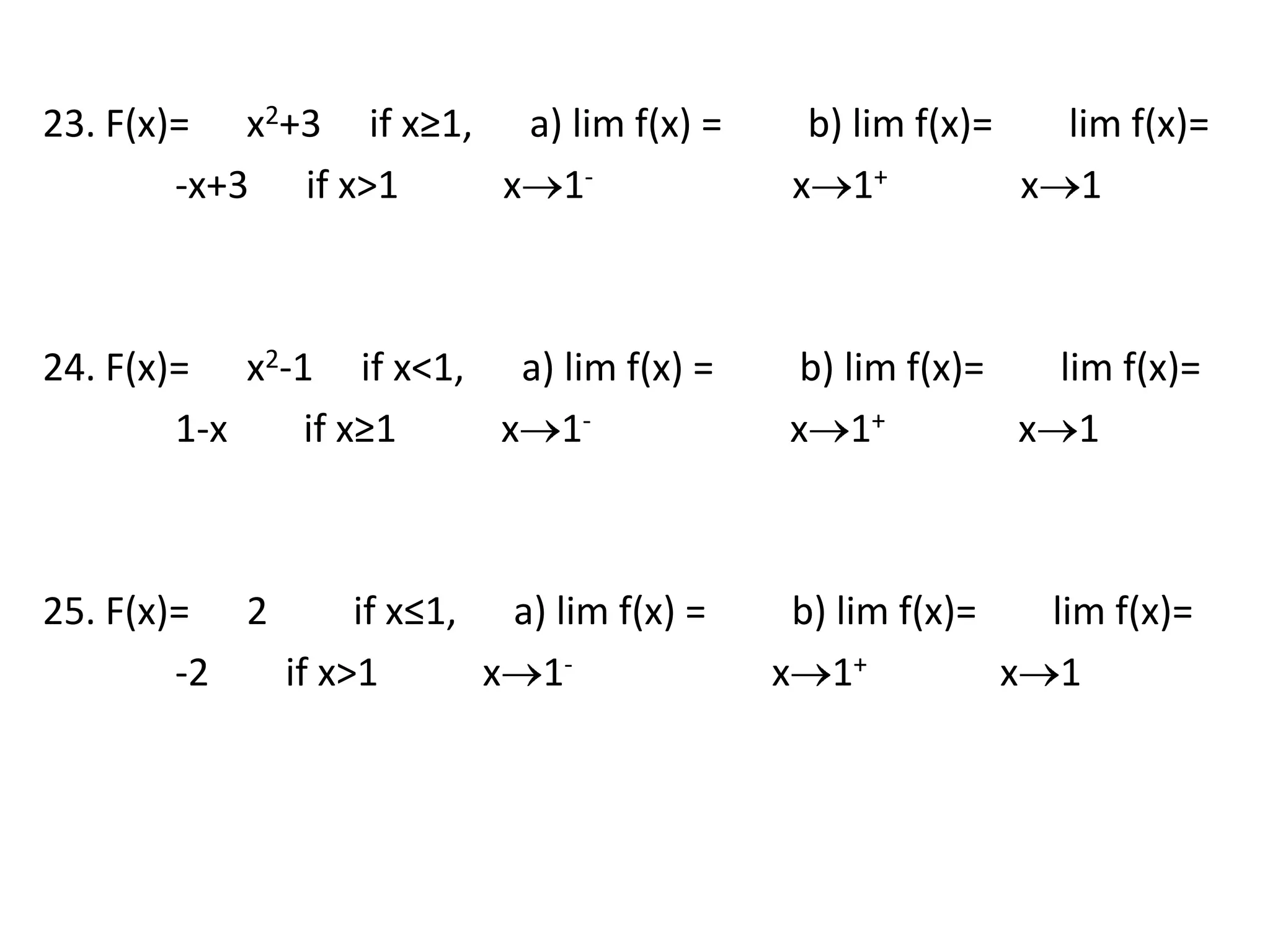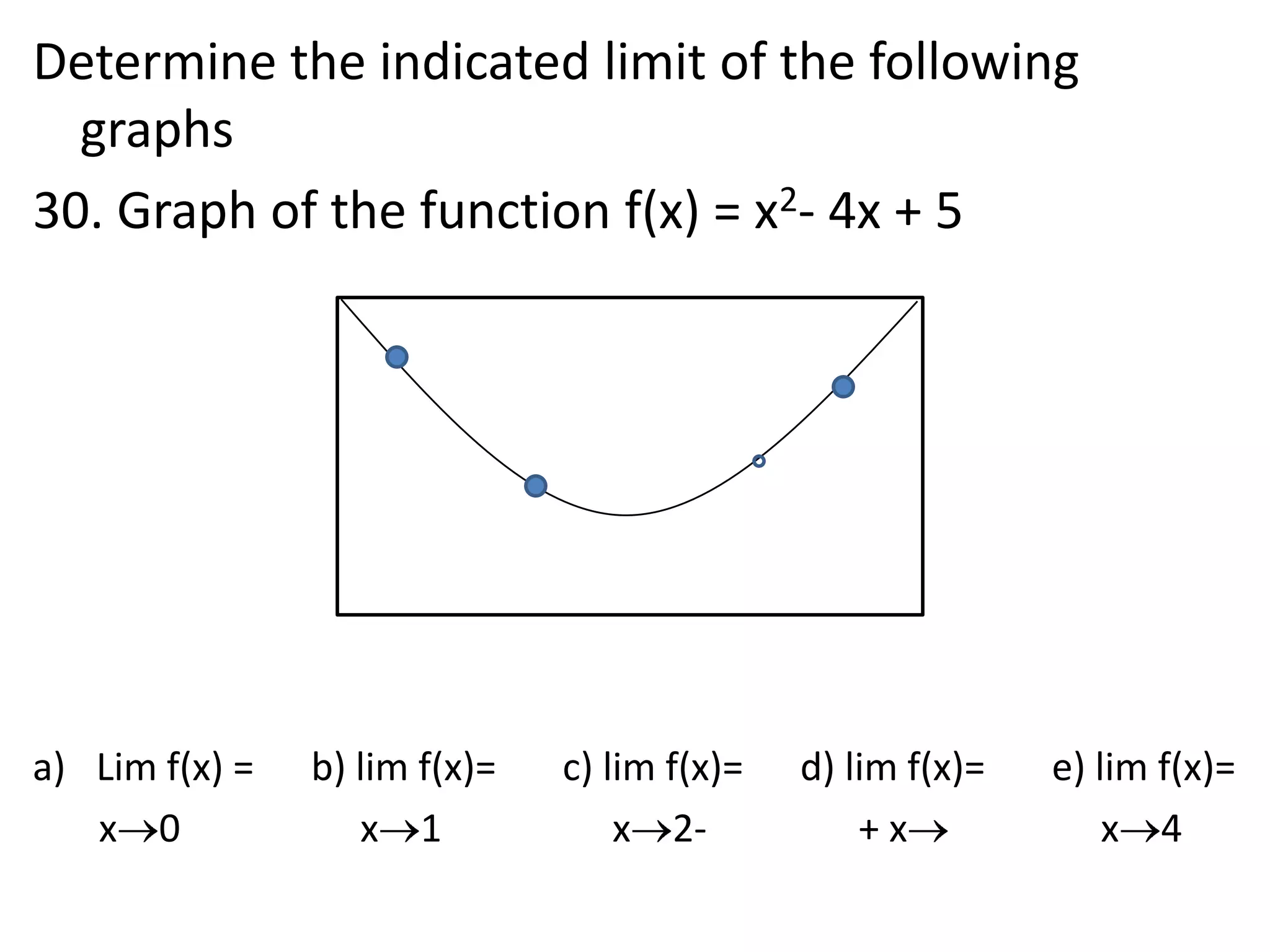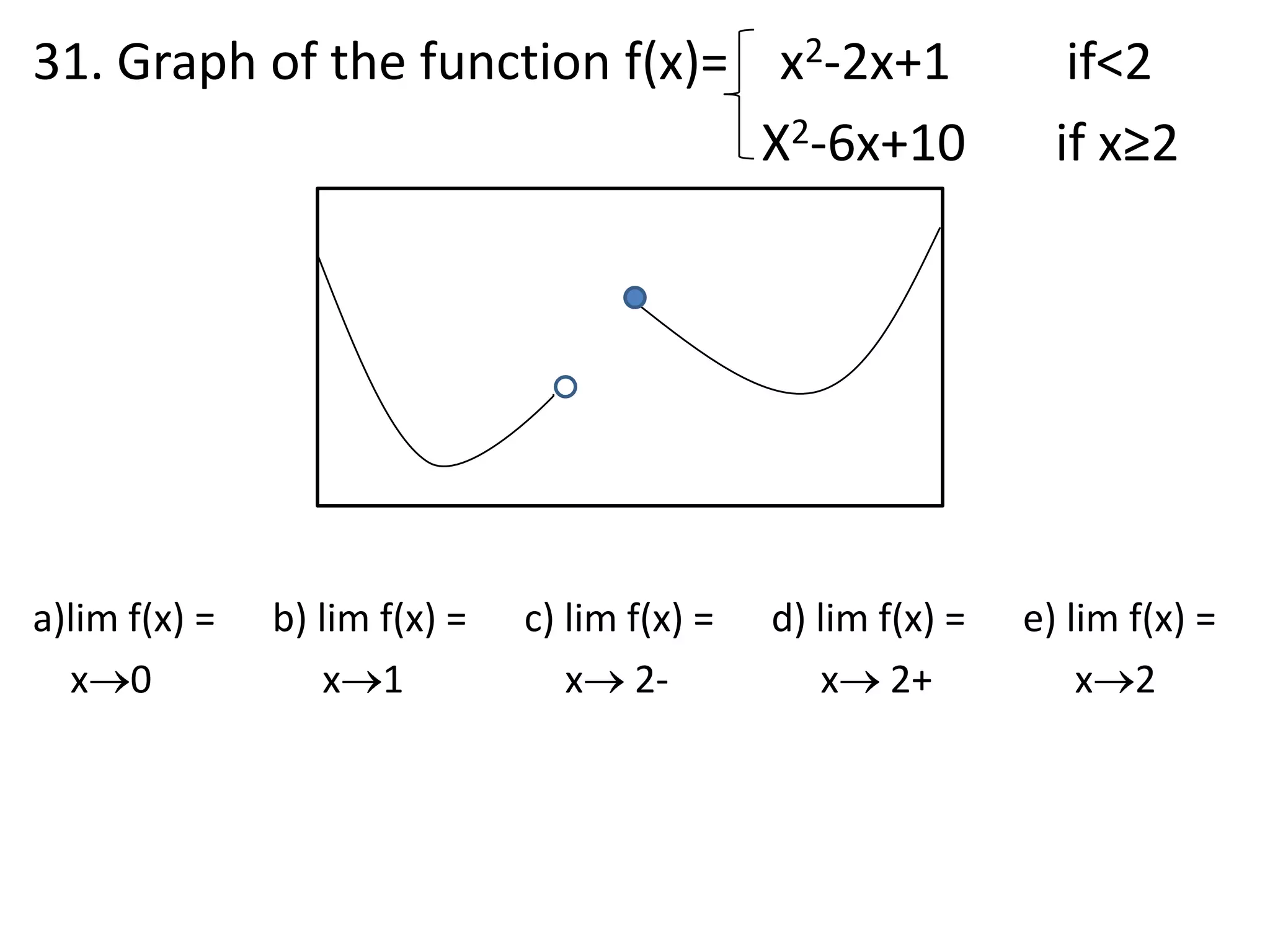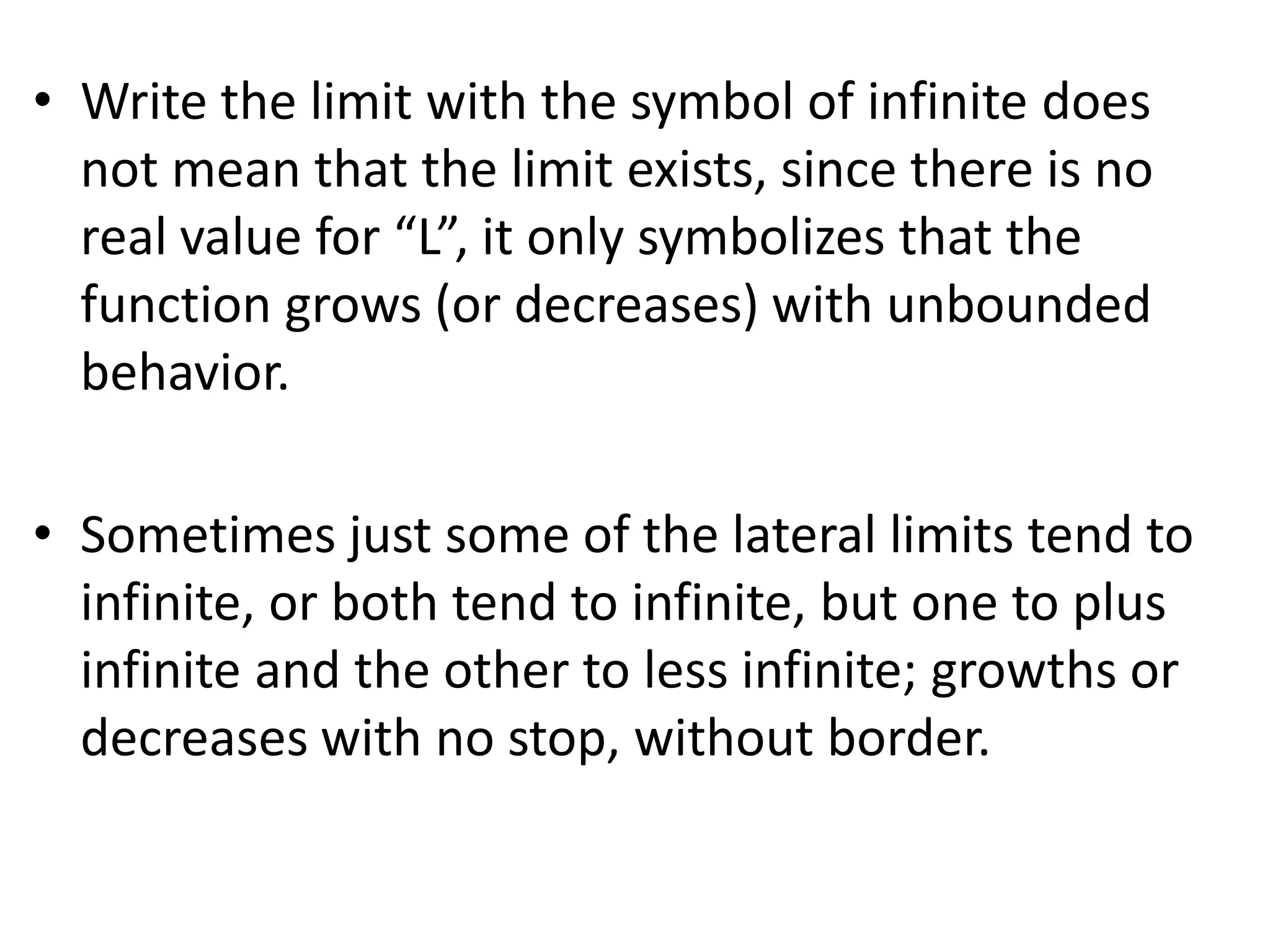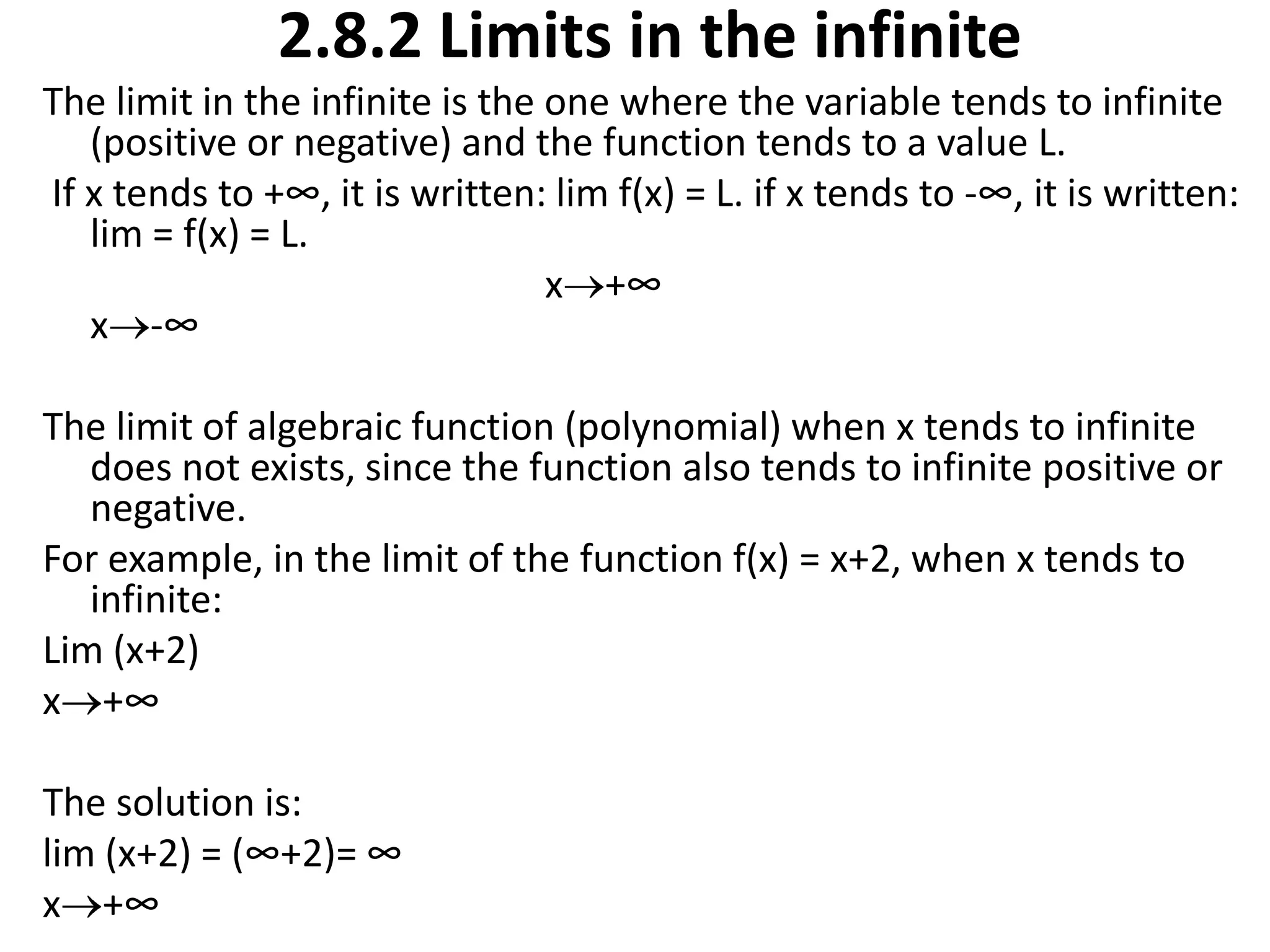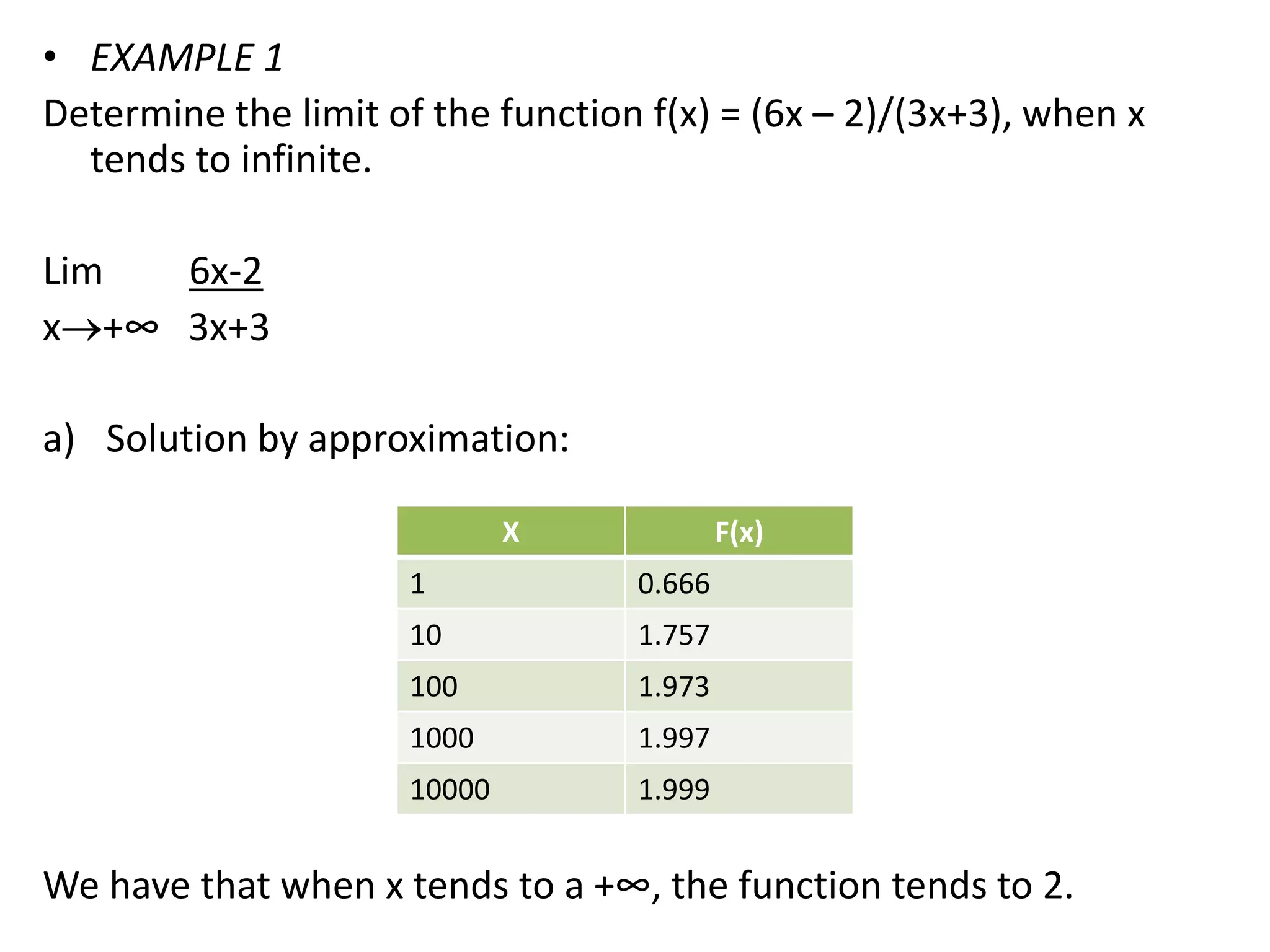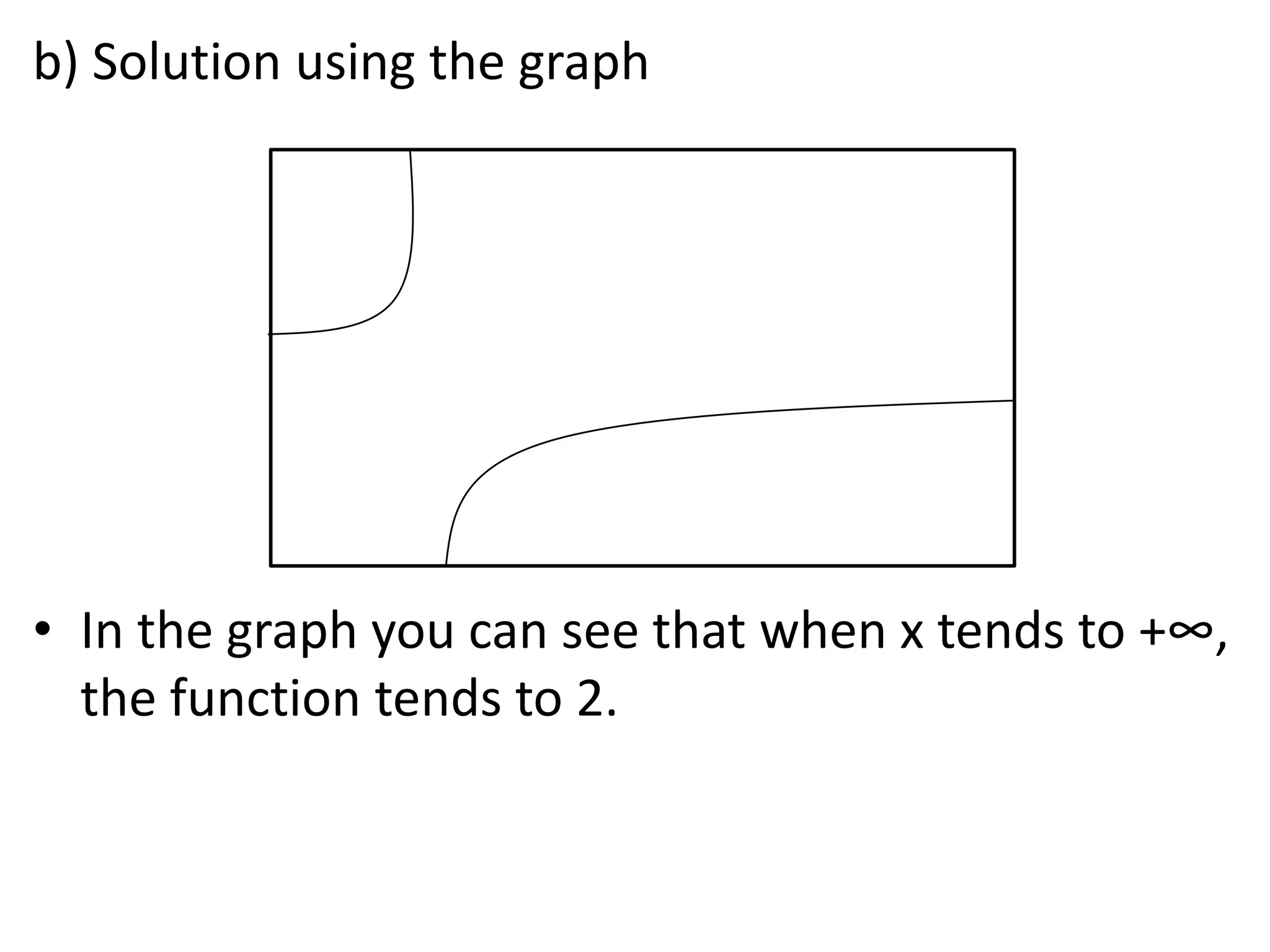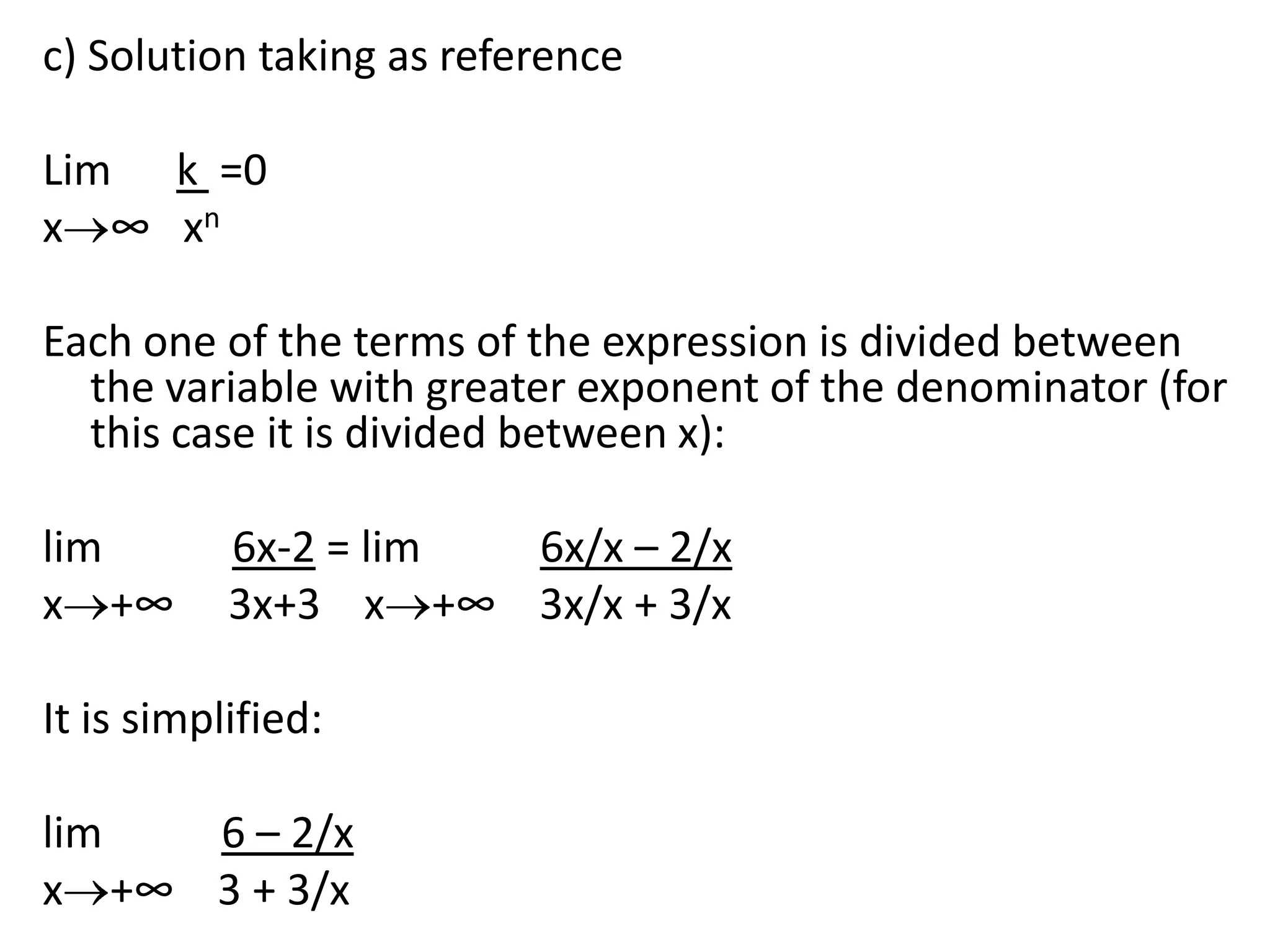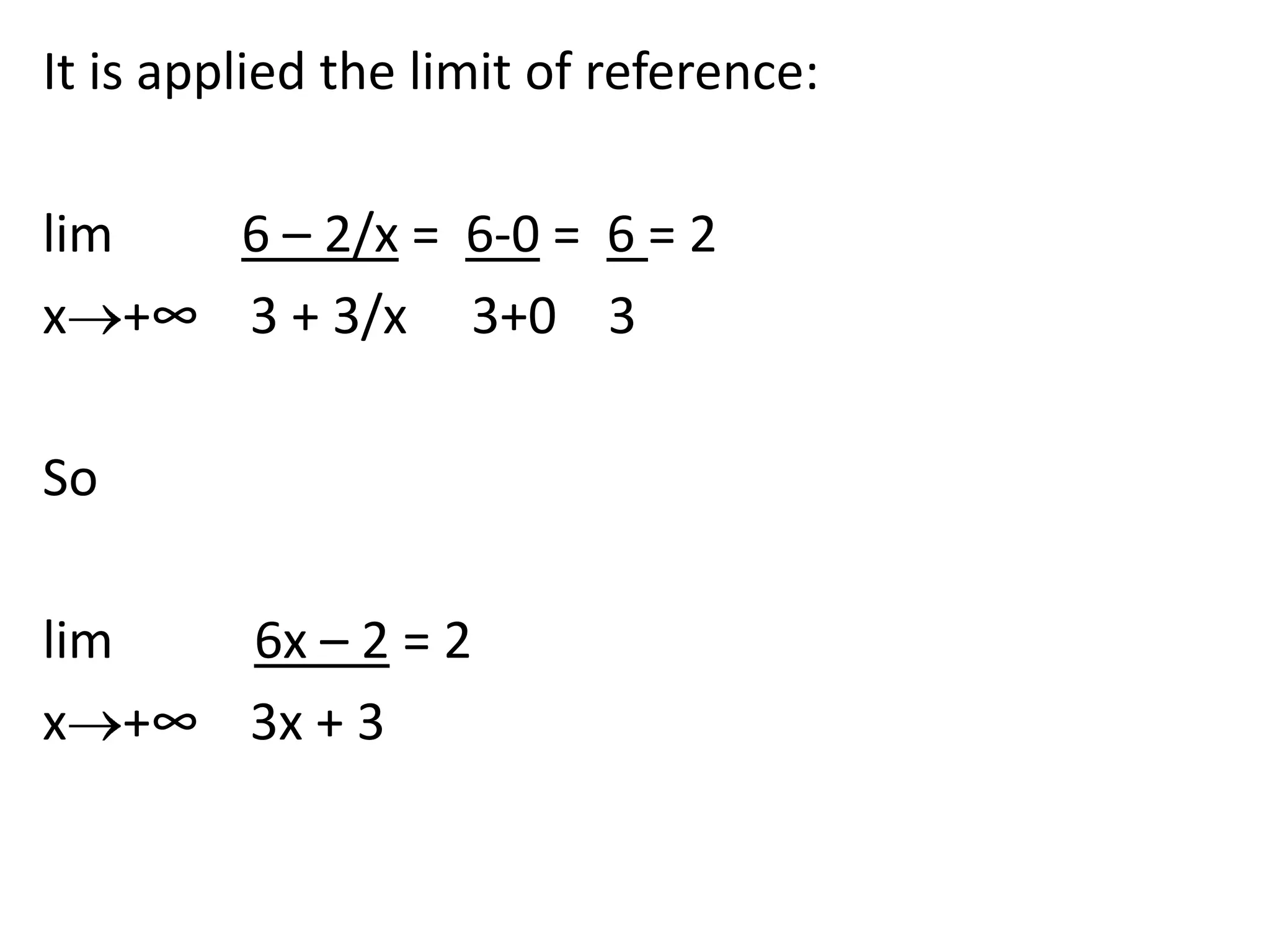This document discusses limits involving infinity. It defines an infinite limit as one where the function tends to positive or negative infinity as the variable approaches a value. An infinite limit is written as lim f(x) = +∞ if it tends to positive infinity, and lim f(x) = -∞ if it tends to negative infinity. As an example, the limit of the function f(x) = 1/(x-4)2 as x approaches 4 is written as lim f(x) = ∞, since the function grows without stopping as x gets closer to 4.
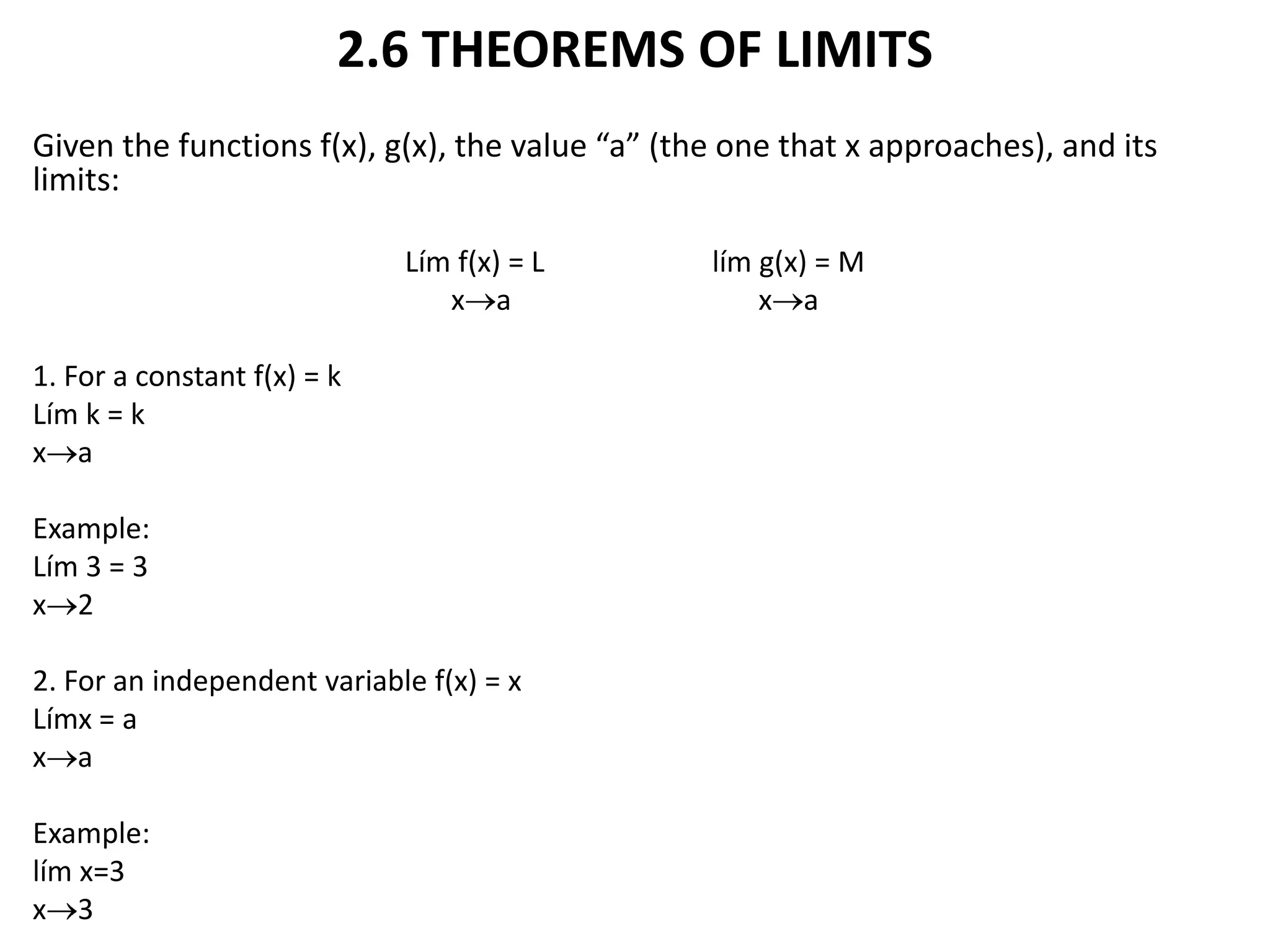
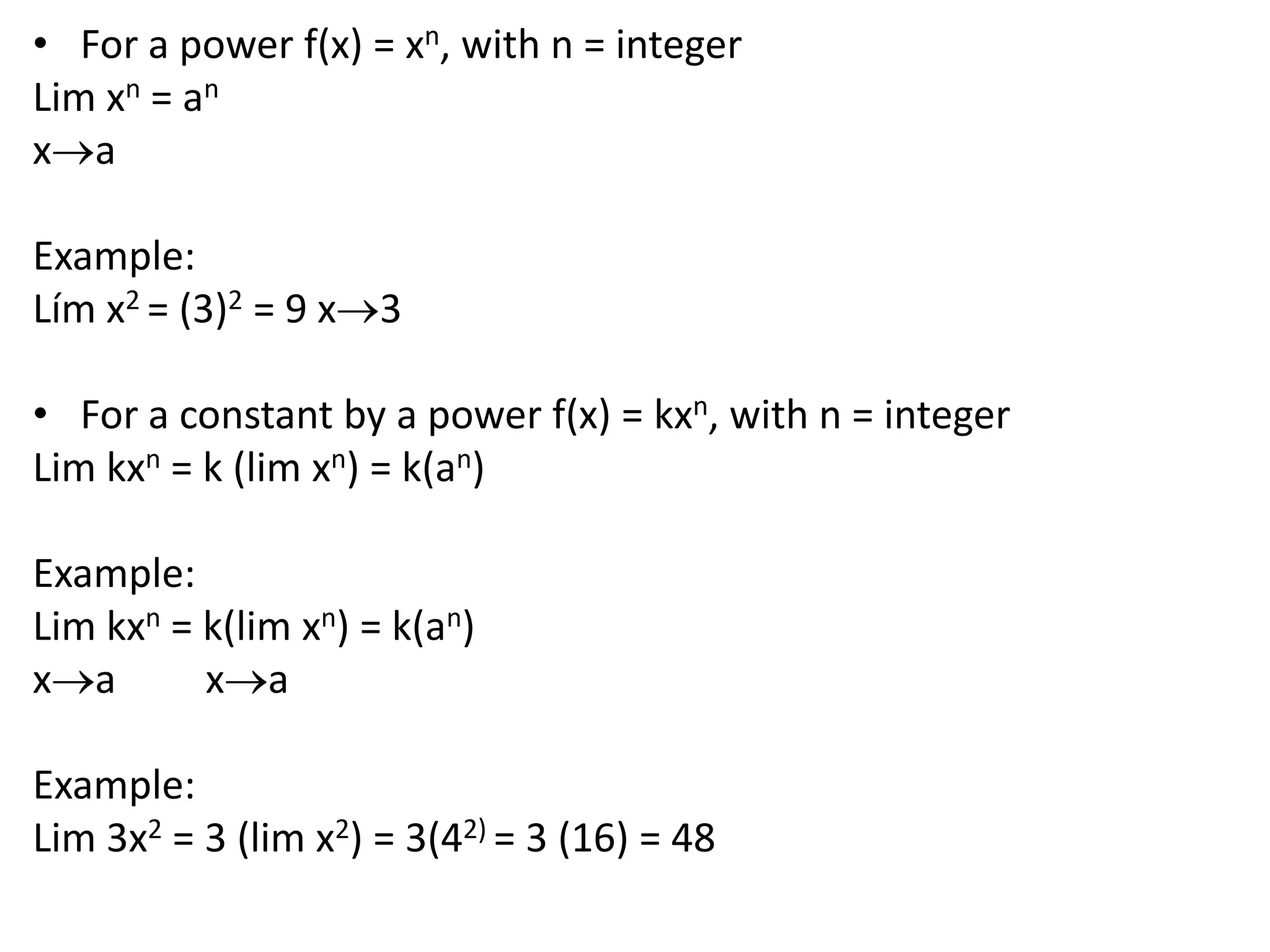
![For a sum of functionsLim [f(x) + g(x)] = lim f(x) + lim g(x) = L+Mxaxaxa example:lim [3x2 + 6x] = lim 3x2 + lim 6x = 12+ 12 = 24x2 x2x2 For a product of functionsLim [f(x)g(x) = [lim f(x)][lim g(x)] = (L)(M)xaxaxaExample:lim [(3x2)(6x)] = [lim 3x2][lim 6x] = (12)(12) = 144x2 x2x2For a quotient of functionsLim [f(x) ÷g(x)] = [lim f(x)]÷[lim g(x)] = (L) ÷ (M), if M0xaxaxa Example:lim [(3x2)2÷(6x)] = [lim 3x2]÷[lim 6x] = (12) ÷ (12) = 1x2 x2x2](https://image.slidesharecdn.com/presentacioncalculo-110127011426-phpapp02/75/Presentacion-calculo-jan-3-2048.jpg)
![For a function elevated to a powerLim [f(x)n = [lim f(x)]n = (L)n, with n = integer Example:Lim (3x2)2 = (lim 3x2)2 = [(3)(lim x2)2 = [(3)(22)2 = [12]2 = 144x2 x2x2 Lim [3x2 + 6x]2 = [lim 3x2 +6x]2 = [lim 3x2 + 6x]2 = [3 lim x2 + 6lim x]2= [3(2)2 + 6(2)]2 = [12+12]2 = [24]2 = 576 For a root of functionLim nf(x) = lim f(x) = L, with n= integer, f(x) ≥0xaxa Example:lim4x2 = lim 4x2 = 4(2)2 = 16 = 4x2 x2](https://image.slidesharecdn.com/presentacioncalculo-110127011426-phpapp02/75/Presentacion-calculo-jan-4-2048.jpg)
